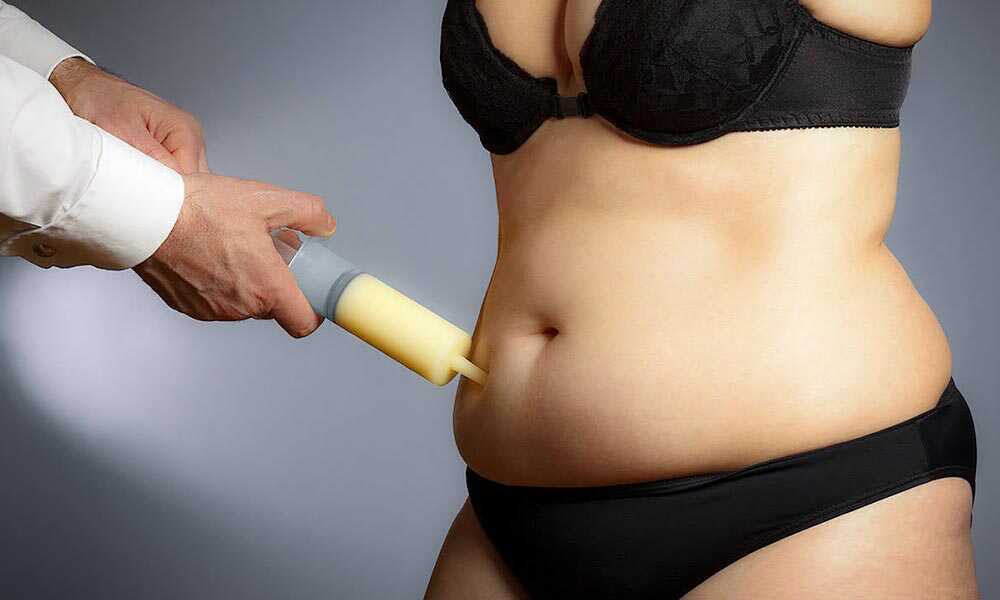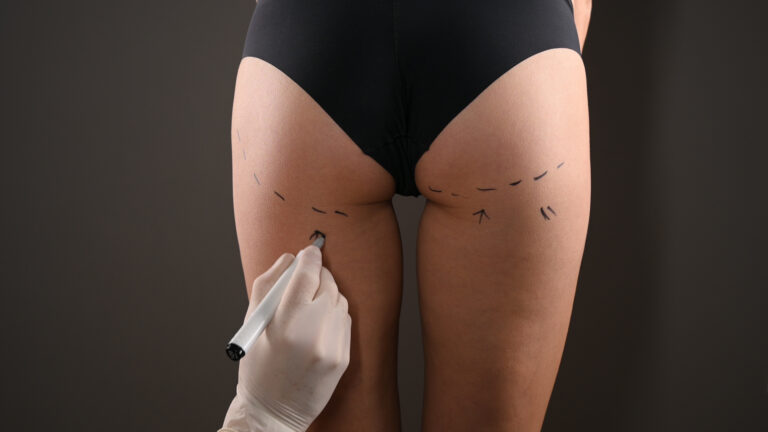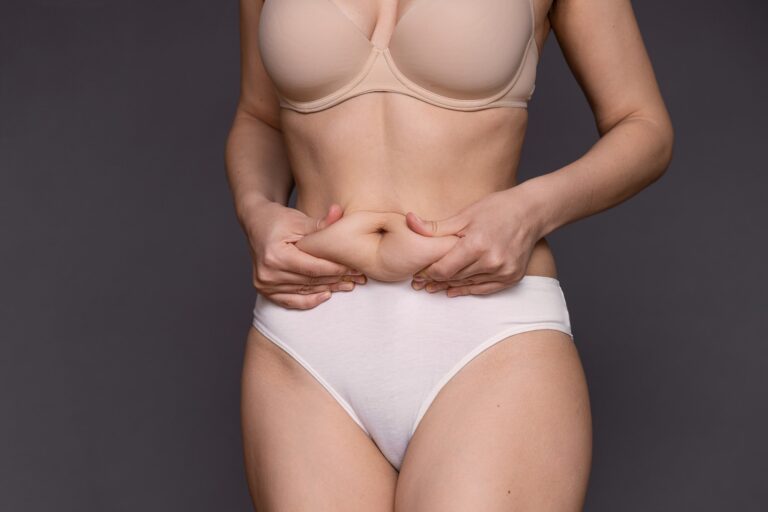Liposuction
Liposuction is one of the commonest procedures done in cosmetic surgery. It requires advanced medical and surgical knowledge to be performed safely. Artistic vision and skilled hands are necessary to sculpt a body, beautifully. We, at NNT, combine art and science in a fine blend and consistently deliver wonderful results for our patients.
Liposuction is not a weight loss procedure, it is a body contouring modality.
Liposuction helps eliminate areas of unwanted, exercise and diet-resistant fat, from arms, neck, chest, abdomen, flanks, butts, calves, thighs, love handles, back, etc. With liposuction, we aim to reduce or eliminate specific fat pockets in different areas of the body that do not respond to normal slimming regimens or exercise.
Liposuction is done if
- One has localized areas of fat deposits that are disproportionate with the rest of the body
- One likes more definition in certain area
- One has good skin elasticity as liposuction removes fat, but does not tighten skin
Liposuction is an out-patient, day care procedure and carried out under local (for small areas) or general anaesthesia. The technique consists of making a keyhole incision in a concealed place besides the fatty area. Then, a pencil-sized cannula connected to a suction device is used to suck out fat. Fat is taken out only from the “storage” area, and never from the metabolic area. This procedure causes no pain and is of approximately half hour duration for each area. When the suction is completed, the keyholes are stitched closed with absorbable sutures. A dressing is put in place, and a compression garment secures the suctioned area.
Post operatively, one can expect to return to normal lifestyle (activities of daily living) within 48 hours and more strenuous activities in about 2-3 weeks depending on the recovery. Antibiotics are prescribed for 48 hours or more. Compression garment is to be strictly worn for the duration as specified by the doctors.
Your doctors will be in touch with you all through your convalescence.
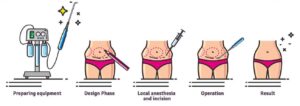
Before and After Surgery
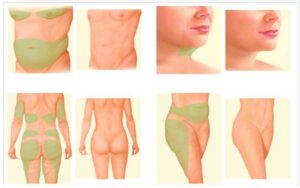
Different types of liposuction
Suction-assisted liposuction (SAL), the most traditional form of liposuction, draws fat out with a cannula-vacuum apparatus, facilitating removal of unwanted fat from specific body parts.
Power-assisted liposuction (PAL) is SAL, but with a motorised powered cannula that speeds up fat removal. It also helps in precision fat extraction as well as fat grafting.
MicroAire is a world renowned power-assisted liposuction (PAL) device. It comprises of a power-assisted cannula that generates extremely rapid yet gentle to and fro movements, helping it to pass through the toughened fibrous tissues of fat with ease, whilst offering a great precision and making liposuction easy. The tissues are not damaged, which means that the extracted fat can be used for autologous grafting of other areas if the needed.
Hi-Definition Liposuction is a recently developed successful technique when it comes to targeting small areas of stubborn fat, surrounding specific muscle groups, which when selectively liposuctioned, define those muscle groups better. This technique is focused on precision and it removes superficial and deep fat deposits to enhance the underlying musculature. It is quite successful for people looking for defined, muscular and athletic contours. Ultrasonic liposuction (VASER) and PAL, both can be used in conjunction with each other to perform Hi-Definition liposuction. It is for those who work-out regularly but are unable to achieve the defined, chiselled look of washboard abs, ripped biceps/deltoids and obliques.
Ultrasound Assisted Liposuction (UAL): This procedure involves the use of ultrasound technology in emulsifying the fat for its easy removal. VASER or Vibration Amplification of Sound Energy and Resonance is again a highly sophisticated and modern technique used for painless and minimally invasive liposuction. VASER uses probes which deliver ultrasonic energy that helps loosen and emulsify stubborn fat with precision. After emulsification. Fat is sucked out using PAL or SAL.
Recovery After Liposuction
- The recovery time depends upon the area on which you are undergoing the surgery and associated procedures if any, such as tummy tuck.
- Liposuction patient can go home the same day.
- A patient experiences mild to moderate pain for first 72 hours for which painkillers are prescribed.
- Post 3 days, the patient has mild swelling (inflammatory) that gradually disappears in the next 2-3 weeks. Depending upon the area of the surgery, the most patient can join back work after 2-3 days if it is a sedentary/desk job.
- Strenuous activities are to be restricted for at least a month. The timelines, however, differ on an individual basis and capacity.
- Patient is advised to wear a pressure garment during first 4-6 weeks post-surgery to keep the contours maintained as designed during surgery.
Compression or pressure garment
After some surgeries such as Liposuction, Breast surgeries (Augmentation/reduction/lift), Gynaecomastia, Abdominoplasty/Tummy Tuck, 6 Pack Abs Surgery and Hi Def liposuction, a compression/pressure garment is very important to reduce the chances of complications and adds certain merits to the surgical outcome.
A Compression garment or belt is to be worn 24×7 for about 3-4 weeks post-surgery except while bathing and self-cleansing times. Sometimes, only night time wearing of the garment may be advised for 2-3 weeks more.
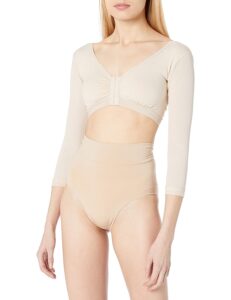
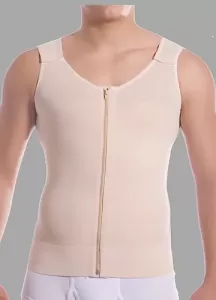
The need of a compression garment post surgery
- To Control Postoperative Swelling – After long invasive surgeries, oedema fluid starts to collect in the tissue planes, resulting in swelling of the treated areas. The pressure garment helps reduce the swelling and keep it under control by applying pressure on tissues and pushing the fluid back into veins and lymphatic channels.
- To Prevent Collection of Other Left-over Fluids/blood – A clear fluid collection called Seroma sometimes gets collected in the empty spaces that are left after the surgery, creating fluid filled pockets. This sometimes needs to be drained out with the help of a needle. A garment keeps these empty spaces compressed, not allowing the fluid to get accumulated, thereby preventing seroma/hematoma (blood clot) formation.
- To Contour and Improve The Final Appearance – The garment helps to keep the treated tissues in place while the healing is in progress and helps gain a better refined contour.
- To help improve scarring – Pressure, when applied correctly, helps to improve the appearance of scars. Compression belt helps to organize the collagen fibres as the scars are beginning to form, causing the scars to be softer and easier to manage.
Risks involved
Like every other surgery, there are risks and potential complications of liposuction. Common risks involved include, anaesthesia related risks, bruising, less sensation in skin, minor damage to nerves, blood vessels or muscles, chance of infection, irregular contours, asymmetry, persistent swelling, worsening of cellulite.
However, if performed by competent plastic surgeons, the complications are avoidable.
